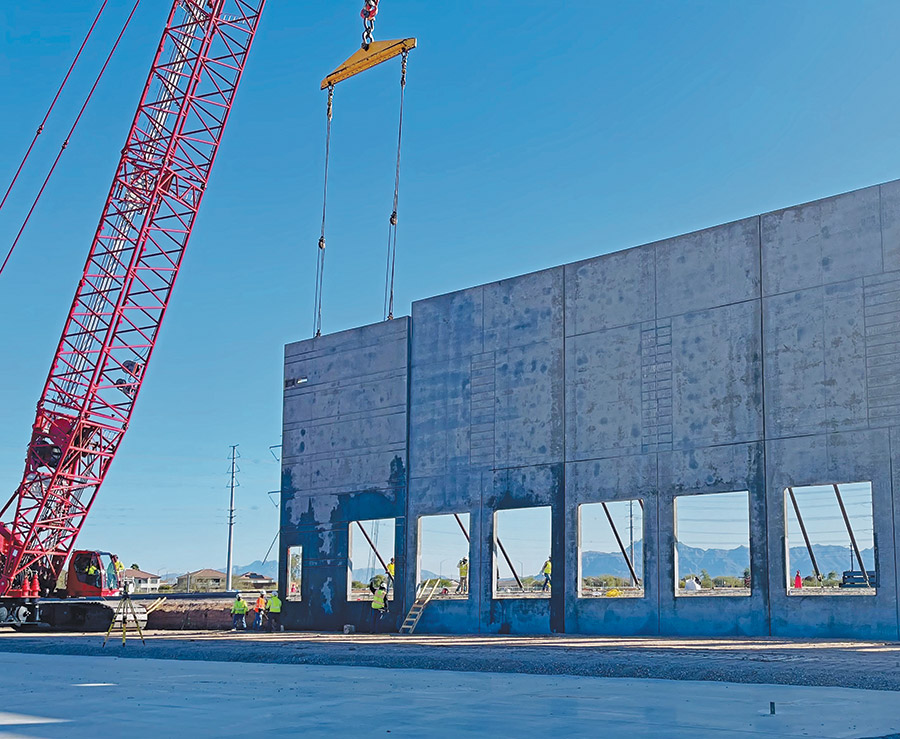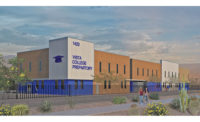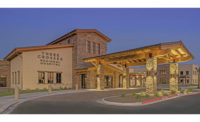Bechtel to Manage, Operate WIPP Nuclear Waste Facility
A Bechtel company, Salado Isolation Mining Contractors LLC (SIMCO), has assumed responsibility for managing and operating the Waste Isolation Pilot Plant (WIPP) in New Mexico, the company announced last month. WIPP is the only deep underground repository for defense-related transuranic nuclear waste in the U. S.
Bechtel stated that SIMCO completed contract transition activities, and the U.S. Dept. of Energy authorized the company to assume management and operations responsibility on Feb. 4.
“We successfully completed the transition and kept WIPP’s ongoing mission of safe nuclear waste disposal the highest priority,” said Ken Harrawood, SIMCO president and program manager, in a press statement.
“We successfully completed the transition and kept WIPP’s ongoing mission of safe nuclear waste disposal the highest priority.”
—Ken Harrawood, President, SIMCO
The company said it onboarded nearly 1,100 employees as it assumed WIPP management and operation responsibilities.
WIPP is a system of disposal rooms mined out of the ancient Salado salt formation more than 2,000 ft underground near Carlsbad, N.M.
Originally designed by a team that included Bechtel, WIPP has operated since 1999, accepting waste from 22 government sites across the U.S. The waste consists of clothing, tools, rags, debris, soil and other items contaminated with small amounts of plutonium and other human-made radioactive elements, known as transuranic or TRU waste. The waste has been accumulating since the 1940s as part of the nation’s nuclear defense program.
DOE selected SIMCO last July, and, following resolution of protests by unsuccessful bidders, it issued the notice to proceed in early November. ENR previously reported that protests were filed by National TRU Solutions, a team led by Huntington Ingalls Industries that also included Atkins, and by Carlsbad Operations Alliance LLC, a team led by Westinghouse with Veolia Nuclear Services as a partner.
The work scope is valued at up to $3 billion over 10 years, the company stated.
OSHA Halts Effort to Revoke Arizona Job Safety Plan

Workers place tilted panels on Pursuit Park, a 640,000-sq-ft, three-building industrial speculative complex in Mesa, Ariz., being built by Mortenson.
Photo courtesy Mortenson
The U.S. Dept. of Labor has called off its efforts to revoke Arizona’s occupational health and safety plan after the state addressed federal officials’ workplace safety and health concerns.
The federal Occupational Safety and Health Administration had proposed revoking Arizona’s safety plan last April, pointing to a “pattern of failures” like passing a bill with residential construction fall protections that were less effective than federal requirements and declining to adopt a health care sector emergency temporary standard (ETS) mirroring OSHA’s during the height of the COVID-19 pandemic. The agency published a formal withdrawal of its proposal to revoke the state safety plan Feb. 15 in the Federal Register.
OSHA officials wrote that the state adopted three outstanding final rules related to beryllium in construction and shipyards; cranes and derricks in construction; and railroad roadway work. Arizona lawmakers passed state laws to ensure penalty levels for safety violations track OSHA’s annual adjustments and to authorize adoption of an ETS when the federal agency deems necessary. Lawmakers also adopted recordkeeping requirements under OSHA’s COVID-19 health care ETS as a permanent standard. The state also provided documentation to show the state had already adopted several required national emphasis programs, including one on trenching and excavation.
A spokesperson for the Industrial Commission of Arizona, which contains the state agency responsible for administering its workplace safety plan, said: “We are very pleased that federal OSHA recognizes all the great work that was done to protect Arizona’s state plan and keep Arizona one of the safest states to work.”
Arizona is one of 21 states that operate its own state job safety programs with OSHA approval. To maintain that, state plans must include rules with at least the same level of effectiveness as OSHA’s. Arizona gained final approval for its state plan in 1985.
OSHA officials previously said they became concerned with Arizona’s state plan in 2012 after state lawmakers moved to loosen some fall protection requirements. Federal regulators said Arizona then fell behind several times in adopting standards that match national safety requirements.
Prior to OSHA’s reversal, construction industry groups in Arizona—had supported maintaining the state safety plan in comments to the federal agency. In its comment, AGC said the state operates “an exceptional occupational safety and health program that is more effective than most federally operated states.”
In a statement announcing its withdrawal, OSHA noted that it was making the move “despite recent public reports of a downward trend in inspections in the plan’s enforcement program,” apparently referring to a January Arizona Republic newspaper report that found compliance inspections in the state had fallen 54% since 2014, primarily due to a decline in staffing. OSHA officials noted that the decline had not been part of the original notice to revoke the state plan.
“OSHA takes these reports seriously, and the agency is actively working with the Arizona state plan to address these issues,” the agency said in a statement.
Mortenson Develops Mesa, Ariz., Spec Industrial Park Contractor Mortenson recently tilted panels on Pursuit Park, a 640,000-sq–ft, three-building industrial speculative building complex in the Mesa, Ariz. Elliot Road Technology Corridor. The company is promoting the development as “an ideal home for high-tech manufacturers” while noting neighboring technology businesses that include Meta, Google, Amazon and Apple.
Mortenson says a second planned phase for Pursuit Park will include a fourth building, adding up to 300,000 sq ft to the available space. Pursuit Park is Mortenson’s first spec industrial development in the state of Arizona, it said. As the developer and builder, Mortenson is partnered with Ware Malcomb as architect, as well as with LaSalle Investment Management, which is overseeing the site.
The firm also says it has other manufacturing and industrial work underway in the state, including two large-scale facilities in Casa Grande, one that is 1 million sq ft and the other set to be 540,000 sq ft.





Post a comment to this article
Report Abusive Comment